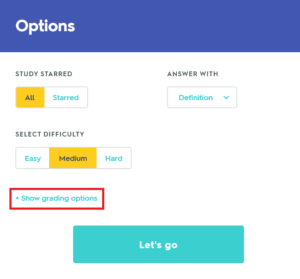
Photo by Paul Melki on Unsplash
Records Records Everywhere
As digital health record keeping technologies continue to grow, it is important to recognize the different roles these technologies play in enabling quality patient care. While these technologies may appear similar in name and basic functionality, developing an understanding of the differences in their definitions and distinct purposes will allow for the effective use of these technologies in the delivery of safe and quality patient care.
Electronic Health Records (EHRs)
Electronic health records (EHR) are systems that securely hold an integrated and comprehensive collection of a patient’s encounters with the health care system and health history (Canada Health Infoway, 2020; Health Information Management, n.d.). EHRs allow for the automation/streamlining of provider workflows, and, as long as data conforms to nationally recognized interoperability standards, enable for inter-organization collaboration throughout the entire continuum of care.
Patient Information Stored in EHRs
- Demographics
- Progress Notes
- Problems
- Medications
- Vital Signs
- Past Medical History
- Immunizations
- Laboratory Data
- Radiology Reports and Images
Electronic Medical Records (EMRs)
Electronic medical records (EMR) are office/clinic/practice-based systems that allow healthcare providers to create, gather, manage or consult patient information during a clinical visit (Canada Health Infoway, 2020; Health Information Management, n.d.). EMRs are in essence the replacement of paper-based charting and differ from EHRs in that system access and available information is restricted to a single office/facility/practice and whatever was collected during a patient’s visit to the clinic.
Patient Information Stored in EMRs
- Weight
- Blood Pressure
- Clinical Information
- Any information collected during a patient’s visit to that specific clinic
Personal Health Records (PHRs)
A personal health record (PHR), or electronic personal health record (ePHR), is a complete, or partially complete, layperson comprehensible health record under the custodianship of a patient or their designate (Canada Health Infoway, 2020; Health Information Management, n.d.). Unlike EHRs and EMRs, a personal health record (PHR) is used strictly by the patient in managing health information, promoting health maintenance, and assisting with chronic disease management (Health Information Management, n.d.). Furthermore, another difference with PHRs is that they are not legal records unless defined as such, and can be subject to a wide variety of legal limitations. Now you might be thinking “why would I use a PHR when I can just keep a record of my information on paper?”. The benefits of electronic over paper is explained in our EHR vs paper records module, but from a patient’s perspective, the benefit of using a PHR over personal paper notes is that it allows for the storage of information that conforms to nationally recognized interoperability standards and as such, can be readily accessible by healthcare providers at the point of care (i.e. healthcare providers can access PHRs from their EHR systems).
Patient Information Stored in PHRs
- Varies as the patient has custodianship of the record and decides what information is kept in it
Learn more about the difference between EMRs and EHRs in the video by CareCloud Corp below!
Library Analogy
The differences between EHR, EMR, and PHR can be quite challenging to grasp even with the amount of informative resources and videos by organizations like Canada Health Infoway. As such, a useful way of thinking about these three systems and how it relates to patient information is to think of it like trying to find a book in a library. For the purposes of this analogy consider the following:
- EHR = library name (e.g. Greater Victoria Public Library)
- EMR = branch name (e.g. Nellie McClung Branch)
- PHR = the book shelf in a specific branch (e.g. the one in the corner collecting dust)
- Patient data = a book (e.g. Percy Jackson Series)
To find the book (Percy Jackson Series) using the “EHR” method is relatively easy and quick as I can view the shelf inventory of all branches under the jurisdiction of the Greater Victoria Public Library. As such, it doesn’t matter if only one branch carries the book because searching through the “EHR” method will allow me to view the inventory of all GVPL branches. However,if I were to use the “EMR” method (remember an EMR only shows local data), it will be more challenging and time consuming because I will now have to go through all 12 GVPL branches individually to see if they carry the Percy Jackson Series. Now lets say, I want to search for the book using the “PHR” method. Compared to the other two methods, this one will take the longest because a shelf may be organized differently depending on the staff who is shelving the books (yes, I know there is a dewey decimal system to prevent this from happening but let’s just pretend that never existed 😛 ).
Activity – Asteroid Strike
Now that we’ve hopefully cleared things up a bit, it’s time for you to showoff your new knowledge/skills by saving the world from an asteroid strike! First go to this EHR vs EMR vs PHR quizlet to have a quick review of these three record keeping systems and then proceed to your Gravity mission. (Please note – when launching Gravity you will be greeted by an “Options” window. Expand the “show grading options” drop down menu and ensure “required on answer only” is selected BEFORE proceeding with the game)
We understand that traditional summative assessments (e.g. tests and quizzes) can be stressful to learners and not be representative of both what they’ve learned and how they’ve learned. As such, we are hoping to leverage the gamification aspect of Quizlet to offer our learners an opportunity to demonstrate their learning in a way that is both fun and conducive of feedback ( e.g. feedback of poor learning would be having the asteroids destroy Earth in the game). This feedback can then be used by learners to self-regulate learning in a way that will help them achieve mastery or pursue further education around the subject matter at hand.

Screenshot of Gravity Options Menu – Show Grading Options